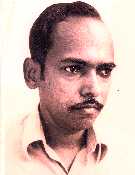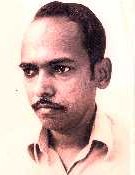

Home | Biodata | Biography | Photo Gallery | Publications | Tributes
Reviews

 |

Home | Biodata | Biography | Photo Gallery | Publications | Tributes Reviews |
 |
During the last decade there has been a tremendous increase in the quantity of research done in the colleges and universities of India in a variety of academic disciplines and the need for Indian books on research methodology in the different disciplines has been keenly felt by research scholars. This is also a period of interdisciplinary research. Social scientists freely borrow tools that have been developed and tested in the mathematical and applied sciences. The invention of the electronic computer has revolutionized many disciplines and students of history have started making use of quantitative methods with the aid of computers.
Even though computer facilities are not easily available in Tamil Nadu, some scholars in recent times have made use of computer methods in the areas of political science, epigraphy and iconometry. In epigraphy, computer methods have been developed for dating of medieval Tamil inscriptions and for grouping of the different signs of the Indus script into separate clusters or groups. Ancient and medieval texts of silpa sastra prescribe definite proportions for the making of stone and bronze images. These iconometric proportions are now analyzed using a computer to compare the proportions prescribed in different silpa texts and to test how closely these proportions were used by practising sculptors.
It is in this era of interdisciplinary research Professor Subrahmanian has brought out this book on historical research methodology.
The book deals with three main aspects of historical research. First it deals with the philosophy of history and the sense of history as understood in the Indian context. Next it deals with general aspects of the methodology of historical research. Finally it deals with statistical and mathematical tools of the social sciences which are of value to the research student.
The author sets forward his strong views on the question of historical sense in India in the second chapter. He points out that the modern historian views the events of the past from a secular point of view, as events that actually occurred at a particular time in a particular society. The modern historian also wishes to find out the causes and consequences of events which he considers important. In contrast to this, in ancient India people held a cyclical theory of yugas coming over and over again and believed that people were born over and over again.
Even today about half of the adult population of Tamil Nadu believes that people are born in a low position because of their misdeeds in the past, as revealed by a recent statewide opinion survey.
The author also points out that there are innumerable inscriptions and a considerable volume of literature in India which would help a historian to get a proper perspective of events. He also refers to the fact that the greatest sons of India like Tiruvalluvar, Kalidasa and Panini have yet to find their definite place in the chronological framework of history.
The main bulk of the book deals with general aspects of the methodology of research. The third chapter is on historical epistemology or the theory of knowledge for the historian. The next chapter deals with different methodologies used in the humanities and the sciences. The fifth and the sixth chapters are concerned with some definitions and sources. The next chapter is on historical fallacies, followed by a chapter on historical objectivity. The ninth chapter is on related disciplines in which thirteen ancillary disciplines and another thirteen allied disciplines are mentioned. A whole chapter is devoted to the details of the mechanics of research including the production of thesis and many students will find this chapter most useful.
The last two chapters are concerned with the application of mathematical and statistical methods to historical studies. The author uses the term Cliometry which is derived from the words Clio, the Greek goddess of history, and metric, measurement, to describe a new area of research methodology. The word Clio pronounced as klyo is often used to denote historical studies in general. The chapter on Cliometry deals with statistical analysis of quantitative data used in historical studies. The chapter on Cliology illustrates the use of other mathematical techniques which are of use in historical studies.
The application of statistical methods in future by enterprising students of history will lead to the use of computer methods in historical research in India. A multidisciplinary approach is needed if we are to make rapid progress in this era of computers and quantification. When major research projects are formulated in future they should have provision for computerization of data wherever there are large quantities of data to be analyzed. This area has a lot of promise to offer to the young future historians of India.